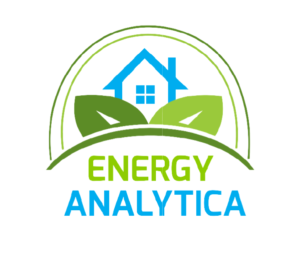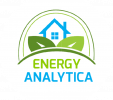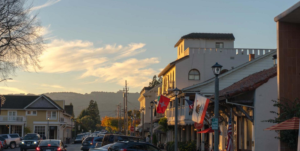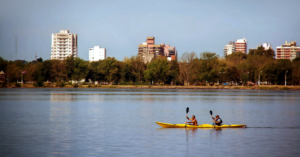To limit the development of nonroof and roof heat islands in new construction, therefore lowering the energy need for building cooling and regulating ambient temperature. Additionally, Tier 1 and Tier 2 measures for adoption by cities and counties seeking to go above and beyond the minimal statutory criteria for their communities include provisions for cool roof installations.
CALGreen Code Section A5.106.11: Heat Island effect.
Reduce nonroof heat islands by Section A5.106.11.1 and roof heat islands by Section A5.106.11.2.
CALGreen Code Section A5.106.11.1: Hardscape alternatives.
Use one or a combination of strategies 1 and 2 for 50 percent of site hardscape or put 50 percent of parking underground.
1. Use light colored materials with an initial solar reflectance value of at least .30 as determined in accordance with American Society for Testing and Materials (ASTM) Standards E1918 or C1549.
2. Use open-grid pavement system or pervious or permeable pavement system.
CALGreen Code Section A5.106.11.2: Cool roof for reduction of heat island effect.
Use roofing materials having a minimum aged solar reflectance and thermal emittance complying with Sections A5.106.11.2.1 and A5.106.11.2.2 or a minimum aged Solar Reflectance Index (SRI) complying with Section A5.106.11.2.3 and as shown in Table A5.106.11.2.2 for Tier 1 or Table A5.106.11.2.3 for Tier 2.
Exceptions:
1. Roof constructions that have a thermal mass over the roof membrane, including areas of vegetated (green) roofs, weighing at least 25 pounds per square foot.
2. Roof area covered by building integrated solar photovoltaic and building integrated solar thermal panels.
CALGreen Code Section A5.106.11.2.1: Solar reflectance.
Roofing materials shall have a minimum aged solar reflectance equal to or greater than the values specified in Table A5.106.11.2.2 for Tier 1 and Table A5.106.11.2.3 for Tier 2. If Cool Roof Rating Council (CRRC) testing for aged reflectance is not available for any roofing products, the aged value shall be determined using the CRRC certified initial value using the equation raged = [0.2 + ß [rinitial– 0.2], where rinitial = the initial solar reflectance and soiling resistance, ß, listed by product type in Table A5.106.11.2.1. Solar reflectance may also be certified by other supervisory entities approved by the Energy Commission pursuant to Title 24, Part 1, California Administrative Code.
CALGreen Code Section A5.106.11.2.2: Thermal emittance.
Roofing materials shall have a CRRC initial or aged thermal emittance as determined in accordance with ASTM E 408 or C 1371 equal to or greater than those specified in Table A5.106.11.2.2 for Tier 1 and Table A5.106.11.2.3 for Tier 2.
Thermal emittance may also be certified by other supervisory entities approved by the Energy Commission pursuant to Title 24, Part 1, California Administrative Code.
CALGreen Code Section A5.106.11.2.3: Solar reflectance index alternative.
Solar Reflectance Index (SRI) equal to or greater than the values specified in Table A5.106.11.2.2 for Tier 1 and Table A5.106.11.2.3 for Tier 2 may be used as an alternative to compliance with the aged solar reflectance values and thermal emittance.
SRI values used to comply with this section shall be calculated using the Solar Reflectance Index (SRI) Calculation Worksheet (SRI-WS) developed by the California Energy Commission or in compliance with ASTM E 1980-01 as specified in the California Energy Code, Section 110.8 (i)3. Solar reflectance values used in the SRI-WS shall be based on the aged reflectance value of the roofing product or the equation in Section A5.106.11.2.1 if the CRRC certified aged solar reflectance are not available. Certified Thermal emittance used in the SRI-WS may be either the initial value or the aged value listed by the CRRC. Solar reflectance and thermal emittance may also be certified by other supervisory entities approved by the Commission pursuant to Title 24, Part 1, California Administrative Code.
Note: The Solar Reflectance Index Calculation Worksheet (SRI- WS) is available by contacting the Energy Standard Hotline at 1-800-772-3300, website at www.energy.ca.gov or by email at Title24@ energy.state.ca.us.
CALGreen Code Section A5.106.11.3: Verification of compliance.
If no documentation is available, an inspection shall be conducted to ensure roofing materials meet cool roof aged solar reflectance and thermal emittance or SRI values. [Tables A5.106.11.2.1 and A5.106.11.2.2 are not shown for clarity. See the CALGreen Code.]
Intent:
The intent of these provisions is to minimize the creation of nonroof and roof heat islands in new construction to reduce the energy load for building cooling and to moderate atmospheric temperature. Additionally, cool roof installations are included in Tier 1 and Tier 2 provisions for adoption by cities and counties wishing to go beyond the minimum mandatory requirements for their communities. California Energy Code, Part 6, Title 24, California Code of Regulations regulates the energy efficiency of the building envelope.
Compliance Method:
Show on the site/landscape plan the application of hardscape material with a calculation that represents at least a 50-percent area for alternatives to hardscape material.
For cool roof application include with the energy calculations a Solar Reflective Index Calculation Worksheet (SRI-WS) and specifications for cool roof materials selected to comply with the cool roof provisions shown in Table A5.106.11.2.2 or A5.106.11.2.3
Suggestion:
Contractor: Maintain product data sheets for roofing materials for on-site verification by the enforcing agency and for the operation and maintenance manual.
Enforcement:
Plan intake: The plan reviewer should confirm that the construction documents show hardscape design calculations, energy compliance forms and specifications for compliance with the cool roof provisions.
On-site enforcement: The inspector should verify that hardscape alternatives are constructed as calculated. Check product data sheets for the roofing materials for compliance with cool roof values. If no documentation is available, inspect the project to ensure materials selected meet the SRI values.
(Excerpted from ‘Guide to the 2022 California Green Building Standards Code Nonresidential’ – Appendix A5)




